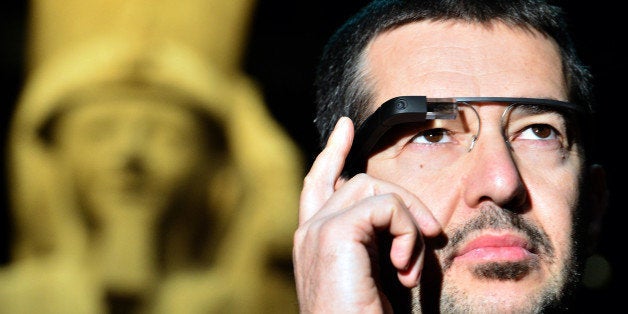
As a child, The Jetsons was one of my favorite cartoons. It gave me hope for a future and seemed like a perfect utopia -- much preferable to its stone-age counterpart, The Flintstones. I thought surely by the time I'd be a high school student in 1999, I'd have a Skypad apartment, flying car and a robot maid!
In 2014, I'm disappointed to report that I don't even have a dog named Astro, let alone a flying saucer. But with all the fuss about wearable technology and the Internet of Things (IoT) lately, and at this month's Consumer Electronics Show (CES), I think we're inching ever closer.
In 2012, I had never heard of the "Internet of Things." By 2013, it seemed to dominate my life. I coveted a Nike Fuel Band, started working with a client in the IoT, received a FitBit for Christmas, and oogled Google Glass. The wearable tech boom seems to be largely driven by advances in data storage capacity, reduced cost of data sensors, and longer battery life of Bluetooth-connected devices. According to ShotTracker, the market is expected to be eight times larger than it was in 2012. By 2018, it could reach $19 billion.
There is no denying that the IoT is all the rage, but putting my PR hat on, I have to wonder what its implications are for communications professionals and my clients. The sensors inside these smart devices track a ton of data. Think about a fuel band, for instance. It is monitoring your heart rate, steps taken, calories burned and hours slept. That data can empower people to take actions to improve their health. If we can use big data to improve ourselves on an individual level, how can businesses use it to improve their marketing?
Here's an example: Before we know it, we'll be able to buy Google Glass. Its marketing applications and impact on search will be limited at first, but I predict that will change rapidly. One clue: A recently released Glass app, Glashion, enables users to snap clothing and accessories of passers-by and complete a comparison shop. Think about what those possibilities mean for marketers!
Big data sets are going to become even more important to businesses. There is real power in tracking consumer preferences in real-time. I predict that marketers will finally be able to adjust messaging and awareness tactics to a precise target audience, and directly track success, all in an instant.
We also have to consider how comfortable consumers are going to be with companies tracking their preferences and actions. It will surely feel Big Brother-ish to some. Data breaches will happen. In light of Google's recent acquisition of Nest, a "smart" thermostat maker, some are already feeling squeamish about the IoT's potential for privacy invasion. That means companies involved in the "smart marketplace" should dust off their crisis communications plans and PR professionals should be prepared to address critics.
For now, I'm excited to see where the IoT will take us, both on a personal and professional level. (No Rosie the robot maid, but maybe a DJ Roomba iRobot?) What implications do you think the IoT will have on communications and marketing? Let me know in the comments.